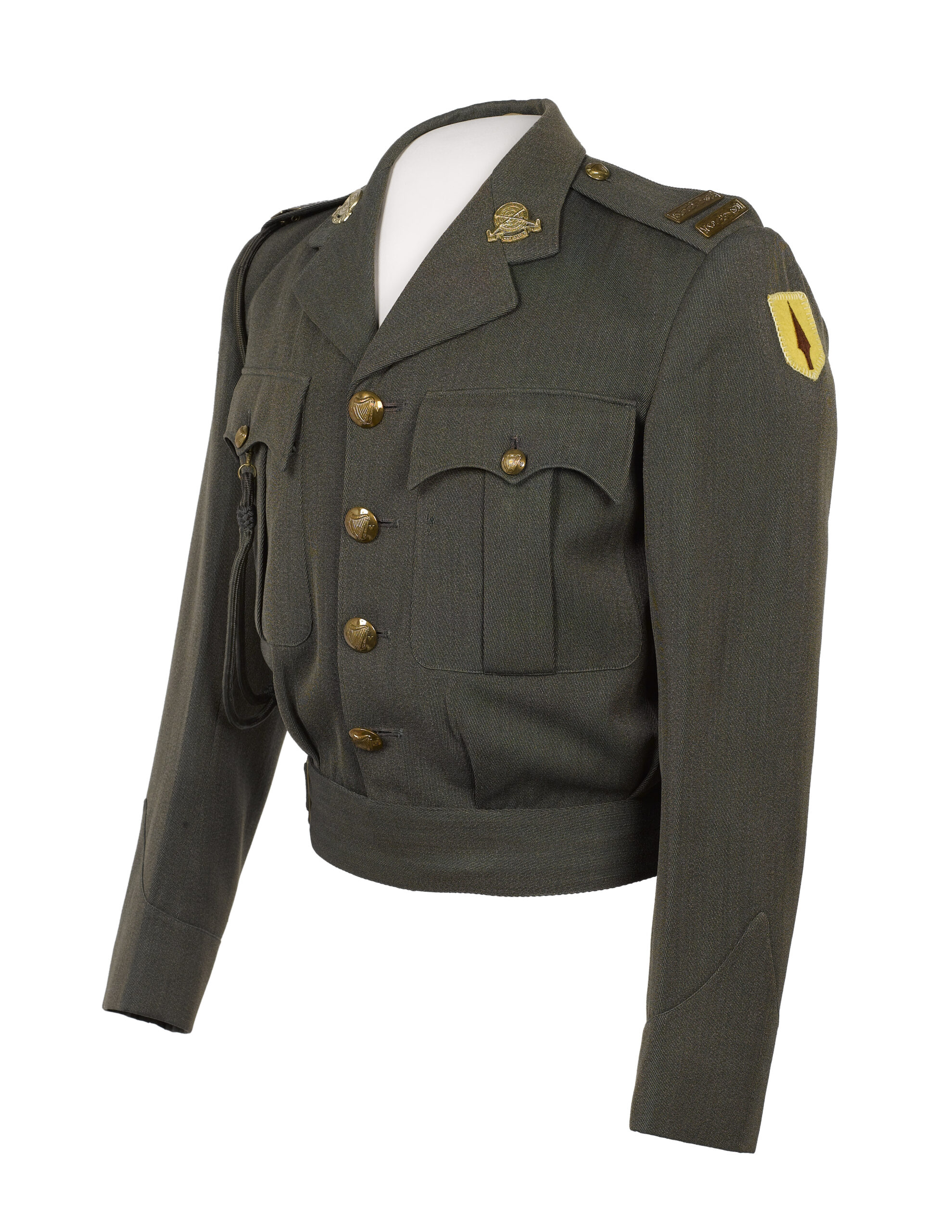By Lar Joye

During the Emergency (1939–45) the Irish Army increased in size to 38,000 in 1942, with an additional 103,530 volunteers in the Local Defence Forces (LDF). Based on these numbers, the Irish Army was optimistic that after the war it could have an establishment of 10,000 regular soldiers, 45,000 1st line, consisting of retired soldiers, and a 2nd line reserve called the Fórsa Cosanta Áitiúl (FCA) of 37,0000. The FCA was created on 6 February 1946 and proved very popular, as units were established all over the country. In many towns in Ireland it became a rite of passage to join up, even if it was just for a paid two-week camp; it was almost a social movement, according to Terence O’Reilly writing in History Ireland in 2011. Similar to the ‘Aikens’ Slugs’ of the Volunteer Force (1933–9) and the ‘Brown Habits’ of the LDF (1941–5), the FCA quickly became nicknamed the ‘Free Clothing Association’.
The FCA suffered from a unique Irish situation whereby the official age to join was seventeen but most of the recruits joined from the age of thirteen, with a blind eye being turned to this until the late 1980s. In 1969 the FCA was called up to assist the regular army. Increased unrest in Northern Ireland during the period of the civil rights marches and the beginning of the IRA campaign led to the regular army being stretched thin to assist the Gardaí, and it took a number of years to increase the size of the army from 8,000 to 14,771 by 1977.
Reserve soldiers, many under the age of seventeen, could be found at weekends in the early 1970s protecting military barracks, TV masts in the Wicklow Mountains and ESB power stations around the country. As one commentator has written,
‘So much relief was supplied to the hard-pressed Permanent Force in the border area that a very senior officer, not usually given to flattery or exaggeration, was heard to say that if it were not for the wholehearted participation of the 8th FCA Battalion, the Border operation would not have been possible’.
Despite its popularity, the FCA faced a number of challenges: it was never well equipped; it had a high turnover of recruits; there were no female recruits until 1993; and it had no defined military role. This led to reorganisations in 1959, 1979 and 1999, and eventually to disbandment in 2005.
Lar Joye is Dublin Port Heritage Director.
